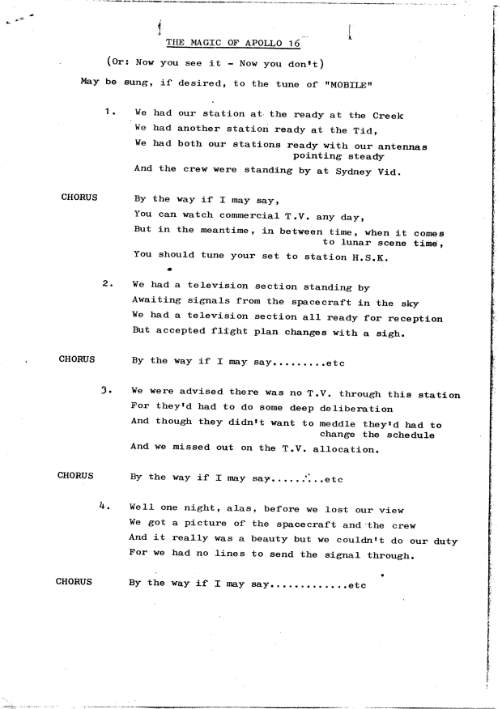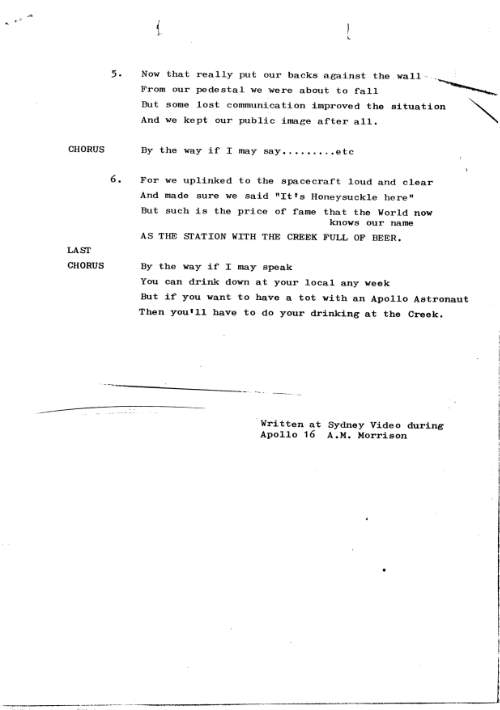Sunday 23 April 1972
During Apollo 16, Australian tracking stations saw very little live television from the lunar surface because an early change to the Flight Plan meant that they would not be in view for most of the EVAs.
As a result, TV links, including satellite television circuits to Houston, were not in place.
These links were expensive. In early 1969, NASA estimated the cost of sending satellite TV from Honeysuckle to Houston for Apollo 11 at around US$15,000 per hour! So, while Sydney Video (After Apollo 12 it was moved to the Post Master General’s City South exchange in Castlereagh Street, Sydney from OTC Paddington) was manned and on standby, video circuits to the USA could not be established at a moment’s notice.
On Sunday 23 April 1972, the Apollo 16 EVA 3 began a little early. The Rover TV camera was activated, and a good picture was seen at Honeysuckle, but the picture could not be sent to Houston. The Moon had not yet risen at Madrid, which would shortly take over communications, where TV links were in place.
At Honeysuckle, Video Tech Ed von Renouard again brought his Super 8 movie camera to the station.
Probably aware that no-one outside Honeysuckle could see the TV, he flimed the scene in the station as the pictures arrived, as well as some clips from later in the EVA.
Ed von Renouard’s Super 8 footage taken at Honeysuckle during Apollo 16. Thanks to Ed von Renouard for the footage, and to Tim Emblem-English and David Woods for their help in getting the film transfer. Thanks to Eric Jones for his help with the timing. Edited, and audio added, by Colin Mackellar. (If full screen does not work in your browser, please watch it here on Vimeo.) |

